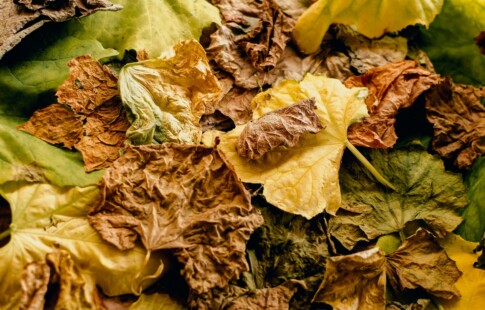
7 Creative Ways to Help the Earth
We are reader-supported. When you buy through links on our site, we may earn affiliate commission.
Living sustainably is more important than ever as communities around the world feel the effects of climate change. Fortunately, people can take action to become more environmentally friendly. Learn more about sustainable living and several ways to help the Earth every day.
7 Ways to Help the Earth and Live Sustainably
Check out these creative ways to help the Earth and feel better about your contribution to our planet.
1. Upcycle Your Items
We’ve all heard of recycling — you probably have a recycling bin where you put plastics, metals and cardboard instead of throwing them in the trash. It all ends up at a recycling center, where recyclable items are sorted, crushed and turned into reusable materials. Get creative and take it a step further with upcycling.
Upcycling is when you take used objects you’d otherwise throw away and make them into useful, even better items you’ll continue to use. Instead of destroying items at a recycling center, you keep them and use your crafty skills.
For example, you can take wine bottles, cut them in half, sand down the edges and use the bottom halves as drinking glasses. If you’re considering throwing out clothes that don’t fit anymore, use the fabric to sew bags, pillow covers, mug cozies or quilts! The only limit to upcycling is your creativity.
2. Buy Secondhand Clothes
Clothing production is a significant source of carbon emissions, making up at least 10% of global greenhouse emissions in recent years. Instead of contributing to the demand for the latest fashions, shop secondhand.
You can find plenty of high-quality, fashionable clothing at thrift stores nearby. In addition to saving money and supporting your community, shopping at thrift stores helps you find clothes that last. Fast fashions are made with cheaper materials and show wear as quickly as they’re produced. Natural materials like cotton, wool and leather are sure to withstand the test of time — and make you look great at the same time.
3. Start a Garden of Native Plants
You probably already know that growing your own produce is a great way to provide for your family and reduce carbon emissions. But have you thought carefully about the kinds of fruits and vegetables you’re planting? Growing native species is particularly beneficial for your garden and the local ecosystem.
Do some research into your biome and local environment to discover which plants are native to the area. Growing native plants has several advantages. Since they’re naturally adaptable to your climate, you’ll spend less time and money ensuring they grow properly.
Plus, they encourage the presence of other native species, often providing a habitat for local insects, birds or other wildlife that keep the ecosystem in check.
4. Take Advantage of Meal Planning
Another food-related way to live more sustainably? Start meal planning every week. While this tip might seem like a personal choice, it can have a positive impact on the planet’s health.
According to the EPA, over a third of food produced in the U.S. is thrown away, making up almost a quarter of the material in landfills each year. It’s a waste of resources like water, fertilizer and space, and contributes to greenhouse gas emissions.
Planning your meals is a great strategy to reduce food waste. At the start of each week, you can cook and organize meals for the next several days, ensuring you get the most out of your ingredients. Once you get the hang of meal planning, you’ll cut back on how much food you throw out — and it adds up over time.
5. Start a Compost Pile
Some food waste is unavoidable. If you’re peeling potatoes, cracking eggs or have leftover coffee grounds, you can put those scraps to good use in a compost pile. Composting takes organic materials, like food and yard waste, and allows them to naturally decompose over time, resulting in nutrient-rich soil you can use as fertilizer.
You can easily start a compost pile at your home or find a local program in your neighborhood. Whether you live in the city or a more rural area, there are ways to take advantage of this environmentally friendly hack — and ensure your garden thrives, too!
6. Try Trip Chaining
Fuel emissions are a major contributor to climate change. In 2021, transportation made up almost 30% of greenhouse gas emissions in the U.S. Any way you can limit your driving reduces your carbon footprint and helps the planet, whether you walk, bike or carpool to your destination.
If these modes of transportation aren’t an option and you must use your car, try “trip chaining.” This method is about optimizing your travel and minimizing fuel consumption. Instead of going to work, coming home, going out to the store then returning home, combine your errands into one trip. Go to work, stop at the store, pick up your dry cleaning and handle any other tasks before returning home.
Chaining your trips together instead of making separate trips for every task is more efficient time- and fuel-wise.
7. Join or Start Stewardship Projects
While you can make plenty of changes to your lifestyle around the house, stepping outside into your community is another way to help the earth. Do some research into local stewardship projects, like cleaning up trash in parks, planting trees or restoring habitats.
If you don’t find one that strikes your fancy, start your own! Gather some friends or get in touch with like-minded neighbors and spend the day cleaning up your street or planning a rain garden. Sustainability is all about helping the planet to ensure better lives for ourselves and our communities. Starting a stewardship campaign brings people together to do just that.
Discover Your Own Ways to Help the Earth
When you set your mind to improving the planet, the possibilities are endless. Sustainability takes many forms, and you can explore them all and discover which ones fit best into your life. Taking the time to shape a more environmentally friendly lifestyle makes a difference.
Share on
Like what you read? Join other Environment.co readers!
Get the latest updates on our planet by subscribing to the Environment.co newsletter!
About the author

Jane Marsh
Starting from an early age, Jane Marsh loved all animals and became a budding environmentalist. Now, Jane works as the Editor-in-Chief of Environment.co where she covers topics related to climate policy, renewable energy, the food industry, and more.





